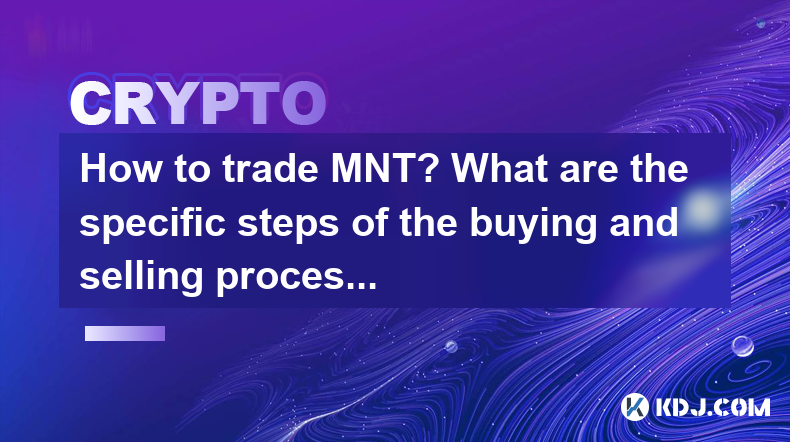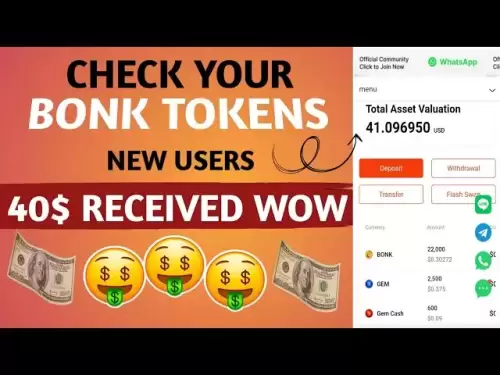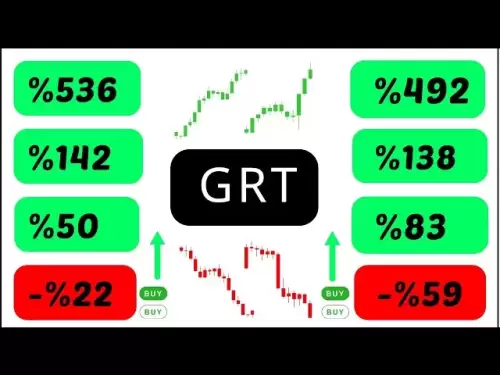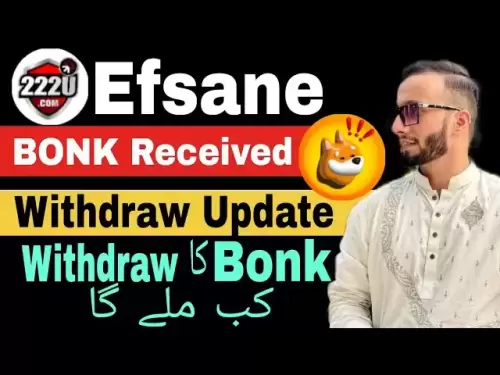-
 Bitcoin
Bitcoin $107,467.9126
1.26% -
 Ethereum
Ethereum $2,447.5288
-0.12% -
 Tether USDt
Tether USDt $1.0005
0.00% -
 XRP
XRP $2.1921
0.13% -
 BNB
BNB $647.2897
0.50% -
 Solana
Solana $144.8627
-0.37% -
 USDC
USDC $0.9996
-0.03% -
 TRON
TRON $0.2732
0.10% -
 Dogecoin
Dogecoin $0.1652
-0.18% -
 Cardano
Cardano $0.5700
-2.87% -
 Hyperliquid
Hyperliquid $37.0274
-1.81% -
 Bitcoin Cash
Bitcoin Cash $484.6957
0.19% -
 Sui
Sui $2.7354
-2.19% -
 Chainlink
Chainlink $13.1727
-1.49% -
 UNUS SED LEO
UNUS SED LEO $8.9978
-0.04% -
 Stellar
Stellar $0.2421
-2.33% -
 Avalanche
Avalanche $17.5633
-3.51% -
 Toncoin
Toncoin $2.8476
-1.94% -
 Shiba Inu
Shiba Inu $0.0...01166
-0.56% -
 Litecoin
Litecoin $85.1071
0.09% -
 Hedera
Hedera $0.1502
-2.96% -
 Monero
Monero $310.2774
-1.64% -
 Dai
Dai $0.9999
-0.01% -
 Polkadot
Polkadot $3.3584
-1.88% -
 Ethena USDe
Ethena USDe $1.0003
-0.04% -
 Bitget Token
Bitget Token $4.4443
2.90% -
 Pi
Pi $0.6242
14.04% -
 Uniswap
Uniswap $6.9774
-2.86% -
 Pepe
Pepe $0.0...09535
-5.05% -
 Aave
Aave $256.7574
-3.35%
How to trade MNT? What are the specific steps of the buying and selling process?
To trade MNT, choose a reliable exchange like Binance or Huobi, deposit funds, and use market or limit orders to buy or sell MNT effectively.
May 06, 2025 at 11:35 am

Trading MNT, or Mantle, involves understanding the cryptocurrency's ecosystem, choosing the right platform, and executing trades effectively. In this guide, we'll walk through the specific steps of buying and selling MNT, ensuring that you have a comprehensive understanding of the process.
Understanding MNT
Mantle (MNT) is a cryptocurrency that operates on its own blockchain, designed to facilitate decentralized applications (dApps) and smart contracts. Before trading MNT, it's important to familiarize yourself with its features and potential uses. You can find detailed information about MNT on its official website and through various crypto news platforms.
Choosing a Trading Platform
To trade MNT, you need to select a reliable cryptocurrency exchange that supports MNT trading pairs. Some popular exchanges that list MNT include Binance, Huobi, and KuCoin. Here are the steps to choose and set up an account on a trading platform:
- Research Exchanges: Look for exchanges that list MNT and have a good reputation for security and user experience. Check reviews and ratings from other users.
- Sign Up: Visit the chosen exchange's website and sign up for an account. You'll need to provide personal information and complete a verification process, which may include submitting identification documents.
- Secure Your Account: Enable two-factor authentication (2FA) to add an extra layer of security to your account. Use a strong, unique password and consider using a password manager.
Depositing Funds
Once your account is set up, you need to deposit funds to start trading MNT. Here's how to do it:
- Select Deposit Method: Most exchanges support deposits via bank transfer, credit/debit card, or other cryptocurrencies like Bitcoin or Ethereum.
- Deposit Fiat or Crypto: If you're depositing fiat currency, follow the exchange's instructions to complete the transaction. If you're using another cryptocurrency, you'll need to send it to the wallet address provided by the exchange.
- Wait for Confirmation: Depending on the deposit method, it may take some time for the funds to be credited to your exchange account. Cryptocurrency transfers are usually faster than bank transfers.
Buying MNT
Now that you have funds in your exchange account, you can proceed to buy MNT. Here are the detailed steps:
- Navigate to Trading Section: Go to the trading section of the exchange and find the MNT trading pair you want to use (e.g., MNT/BTC or MNT/USDT).
- Place an Order: You can place a market order to buy MNT at the current market price, or a limit order to buy at a specific price. For beginners, a market order is usually the easiest option.
- Market Order: Click on "Buy MNT" and enter the amount you want to purchase. The exchange will execute the order at the best available price.
- Limit Order: Enter the amount of MNT you want to buy and the price at which you want to buy it. The order will be executed when the market reaches your specified price.
- Confirm and Execute: Review your order details and confirm the transaction. The MNT will be credited to your exchange wallet once the order is filled.
Selling MNT
Selling MNT follows a similar process to buying, but in reverse. Here are the steps to sell your MNT:
- Navigate to Trading Section: Go to the trading section and select the MNT trading pair you want to use.
- Place an Order: Decide whether to use a market order or a limit order.
- Market Order: Click on "Sell MNT" and enter the amount you want to sell. The exchange will execute the order at the best available price.
- Limit Order: Enter the amount of MNT you want to sell and the price at which you want to sell it. The order will be executed when the market reaches your specified price.
- Confirm and Execute: Review your order details and confirm the transaction. The proceeds from the sale will be credited to your exchange account.
Withdrawing Funds
After selling MNT, you may want to withdraw your funds from the exchange. Here's how to do it:
- Select Withdrawal Method: Choose whether to withdraw to a bank account, another cryptocurrency wallet, or another exchange.
- Enter Withdrawal Details: Provide the necessary information, such as your bank account details or cryptocurrency wallet address.
- Confirm and Execute: Review the withdrawal details and confirm the transaction. The funds will be transferred to your specified destination, and the process may take some time depending on the method used.
Managing Your MNT Holdings
Once you've bought MNT, it's important to manage your holdings effectively. Here are some tips:
- Secure Storage: Consider transferring your MNT to a secure hardware wallet for long-term storage. Hardware wallets offer better security than leaving your MNT on an exchange.
- Stay Informed: Keep up with news and developments related to MNT and the broader cryptocurrency market. This can help you make informed trading decisions.
- Diversify: Don't put all your funds into MNT. Diversify your portfolio to spread risk and potentially increase returns.
Frequently Asked Questions
Q: What are the fees associated with trading MNT?
A: The fees for trading MNT can vary depending on the exchange you use. Typically, exchanges charge a trading fee, which can be a percentage of the transaction value. Some exchanges also have withdrawal fees for moving MNT or other cryptocurrencies off the platform. It's important to check the fee structure of your chosen exchange before trading.
Q: Can I trade MNT on decentralized exchanges (DEXs)?
A: Yes, MNT can be traded on some decentralized exchanges (DEXs) that support its trading pairs. DEXs operate on blockchain technology and allow users to trade directly with each other without the need for an intermediary. Popular DEXs that may list MNT include Uniswap and SushiSwap. The process of trading on a DEX is similar to trading on a centralized exchange, but you'll need to connect a compatible wallet to the DEX platform.
Q: How can I track the performance of my MNT investments?
A: To track the performance of your MNT investments, you can use various tools and platforms. Many exchanges offer built-in portfolio tracking features where you can monitor your holdings and their value over time. Additionally, there are third-party cryptocurrency portfolio trackers like CoinGecko and CoinMarketCap, which allow you to input your holdings and track their performance across multiple exchanges.
Q: Are there any tax implications when trading MNT?
A: Yes, trading MNT can have tax implications depending on your country of residence. In many jurisdictions, cryptocurrency gains are subject to capital gains tax. It's important to keep detailed records of your MNT transactions, including the date of purchase, sale, and the amount of MNT bought or sold. Consult with a tax professional to understand your specific tax obligations related to trading MNT.
Disclaimer:info@kdj.com
The information provided is not trading advice. kdj.com does not assume any responsibility for any investments made based on the information provided in this article. Cryptocurrencies are highly volatile and it is highly recommended that you invest with caution after thorough research!
If you believe that the content used on this website infringes your copyright, please contact us immediately (info@kdj.com) and we will delete it promptly.
- Meme Coins, Crypto Influencers, and Investment: Riding the Wave in 2025
- 2025-06-26 10:25:13
- NoviqTech, HYDI, and Carbon Credits: A Partnership Driving Sustainable Solutions
- 2025-06-26 10:25:13
- Solana ETF Race Heats Up: Invesco Galaxy Joins the Fray
- 2025-06-26 10:40:13
- XRP, Bitcoin, Ethereum: Navigating the Crypto Crossroads in 2025
- 2025-06-26 10:40:13
- Pi Coin Price Prediction: June 26 - Will It Break $0.70?
- 2025-06-26 09:05:13
- Tokenization Takes Flight: Cross-Border Transactions Soar to New Heights
- 2025-06-26 08:30:12
Related knowledge

How to customize USDT TRC20 mining fees? Flexible adjustment tutorial
Jun 13,2025 at 01:42am
Understanding USDT TRC20 Mining FeesMining fees on the TRON (TRC20) network are essential for processing transactions. Unlike Bitcoin or Ethereum, where miners directly validate transactions, TRON uses a delegated proof-of-stake (DPoS) mechanism. However, users still need to pay bandwidth and energy fees, which are collectively referred to as 'mining fe...

USDT TRC20 transaction is stuck? Solution summary
Jun 14,2025 at 11:15pm
Understanding USDT TRC20 TransactionsWhen users mention that a USDT TRC20 transaction is stuck, they typically refer to a situation where the transfer of Tether (USDT) on the TRON blockchain has not been confirmed for an extended period. This issue may arise due to various reasons such as network congestion, insufficient transaction fees, or wallet-rela...

How to cancel USDT TRC20 unconfirmed transactions? Operation guide
Jun 13,2025 at 11:01pm
Understanding USDT TRC20 Unconfirmed TransactionsWhen dealing with USDT TRC20 transactions, it’s crucial to understand what an unconfirmed transaction means. An unconfirmed transaction is one that has been broadcasted to the blockchain network but hasn’t yet been included in a block. This typically occurs due to low transaction fees or network congestio...

How to check USDT TRC20 balance? Introduction to multiple query methods
Jun 21,2025 at 02:42am
Understanding USDT TRC20 and Its ImportanceUSDT (Tether) is one of the most widely used stablecoins in the cryptocurrency market. It exists on multiple blockchain networks, including TRC20, which operates on the Tron (TRX) network. Checking your USDT TRC20 balance accurately is crucial for users who hold or transact with this asset. Whether you're sendi...

What to do if USDT TRC20 transfers are congested? Speed up trading skills
Jun 13,2025 at 09:56am
Understanding USDT TRC20 Transfer CongestionWhen transferring USDT TRC20, users may occasionally experience delays or congestion. This typically occurs due to network overload on the TRON blockchain, which hosts the TRC20 version of Tether. Unlike the ERC20 variant (which runs on Ethereum), TRC20 transactions are generally faster and cheaper, but during...

The relationship between USDT TRC20 and TRON chain: technical background analysis
Jun 12,2025 at 01:28pm
What is USDT TRC20?USDT TRC20 refers to the Tether (USDT) token issued on the TRON blockchain using the TRC-20 standard. Unlike the more commonly known ERC-20 version of USDT (which runs on Ethereum), the TRC-20 variant leverages the TRON network's infrastructure for faster and cheaper transactions. The emergence of this version came as part of Tether’s...

How to customize USDT TRC20 mining fees? Flexible adjustment tutorial
Jun 13,2025 at 01:42am
Understanding USDT TRC20 Mining FeesMining fees on the TRON (TRC20) network are essential for processing transactions. Unlike Bitcoin or Ethereum, where miners directly validate transactions, TRON uses a delegated proof-of-stake (DPoS) mechanism. However, users still need to pay bandwidth and energy fees, which are collectively referred to as 'mining fe...

USDT TRC20 transaction is stuck? Solution summary
Jun 14,2025 at 11:15pm
Understanding USDT TRC20 TransactionsWhen users mention that a USDT TRC20 transaction is stuck, they typically refer to a situation where the transfer of Tether (USDT) on the TRON blockchain has not been confirmed for an extended period. This issue may arise due to various reasons such as network congestion, insufficient transaction fees, or wallet-rela...

How to cancel USDT TRC20 unconfirmed transactions? Operation guide
Jun 13,2025 at 11:01pm
Understanding USDT TRC20 Unconfirmed TransactionsWhen dealing with USDT TRC20 transactions, it’s crucial to understand what an unconfirmed transaction means. An unconfirmed transaction is one that has been broadcasted to the blockchain network but hasn’t yet been included in a block. This typically occurs due to low transaction fees or network congestio...

How to check USDT TRC20 balance? Introduction to multiple query methods
Jun 21,2025 at 02:42am
Understanding USDT TRC20 and Its ImportanceUSDT (Tether) is one of the most widely used stablecoins in the cryptocurrency market. It exists on multiple blockchain networks, including TRC20, which operates on the Tron (TRX) network. Checking your USDT TRC20 balance accurately is crucial for users who hold or transact with this asset. Whether you're sendi...

What to do if USDT TRC20 transfers are congested? Speed up trading skills
Jun 13,2025 at 09:56am
Understanding USDT TRC20 Transfer CongestionWhen transferring USDT TRC20, users may occasionally experience delays or congestion. This typically occurs due to network overload on the TRON blockchain, which hosts the TRC20 version of Tether. Unlike the ERC20 variant (which runs on Ethereum), TRC20 transactions are generally faster and cheaper, but during...

The relationship between USDT TRC20 and TRON chain: technical background analysis
Jun 12,2025 at 01:28pm
What is USDT TRC20?USDT TRC20 refers to the Tether (USDT) token issued on the TRON blockchain using the TRC-20 standard. Unlike the more commonly known ERC-20 version of USDT (which runs on Ethereum), the TRC-20 variant leverages the TRON network's infrastructure for faster and cheaper transactions. The emergence of this version came as part of Tether’s...
See all articles
























































































